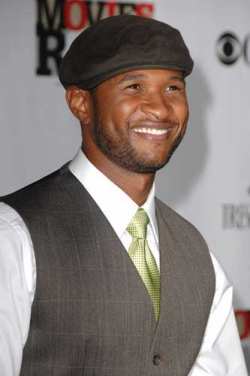Noah's Ark
.........................was the provision by which forefathers of all mankind survived the global deluge of 2370-2369 B.C.E . Detailed instructions were given to Noah by Jehovah as to its size, shape,design for light and ventilation as well as the materials to be used for its construction. The Ark (Heb., tevah'}
It didn't need a rounded bottom or a sharp bow to cut through the water neither did it need any steering. It's function was merely to stay afloat and be watertight. A vessel so shaped is very stable,cannot easily be capsized and contains about one third more storage space than ships of conventional design.There was a door provided in the original design for loading and offloading cargo.
The trees (Cypress) thought to be used in construction are commonly cultivated throughout Palestine; some specimens have been found growing wild in Gilead, Edom, and on the slopes of Mount Lebanon and so it is suggested by some that the “resinous tree” from which Noah obtained wood for the ark was the cypress tree in the land of Palestine.
Design and Size
The ark (Heb., te·vah'; Gr., ki·bo·tos') was a rectangular chestlike vessel presumably having square corners and a flat bottom. It needed no rounded bottom or sharp bow to cut rapidly through the water; it required no steering; its only functions were to be watertight and to stay afloat. A vessel so shaped is very stable, cannot be easily capsized, and contains about one third more storage space than ships of conventional design. There was a door provided in the side of the ark for loading and unloading the cargo.
In size the ark was 300 cubits long, 50 cubits wide, and 30 cubits high. Conservatively calculating the cubit as 44.5 cm (17.5 in.) (some think the ancient cubit was nearer 56 or 61 cm), the ark measured 133.5 m by 22.3 m by 13.4 m (437 ft 6 in. × 72 ft 11 in. × 43 ft 9 in.), less than half the length of the ocean liner Queen Elizabeth 2. This proportion of length to width (6 to 1) is used by modern naval architects. This gave the ark approximately 40,000 cu m (1,400,000 cu ft) in gross volume. It is estimated that such a vessel would have a displacement nearly equal to that of the mighty 269-m (883 ft) Titanic of this 20th century. No cargo vessel of ancient times even slightly resembled the ark in its colossal size. Internally strengthened by adding two floors, the three decks thus provided gave a total of about 8,900 sq m (96,000 sq ft) of space.
Of what this huge ark was to be built was made plain by Jehovah: “Make for yourself an ark out of wood of a resinous tree [literally, trees of gopher].” (Ge 6:14) This resinous wood here prescribed is thought by some to be cypress or a similar tree. In that part of the world what today is called cypress was in abundant supply; it was particularly favored for shipbuilding by the Phoenicians and by Alexander the Great, as it is even down to the present time; and it is especially resistant to water and decay. Doors and posts made of cypress are reported to have lasted 1,100 years. In addition, Noah was told not merely to caulk the seams but to “cover [the ark] inside and outside with tar.”
Ample Carrying Capacity.
The passenger list of the ark was quite impressive. Besides Noah, his wife, his three sons, and their wives, living creatures “of every sort of flesh, two of each,” were to be taken aboard. “Male and female they will be. Of the flying creatures according to their kinds and of the domestic animals according to their kinds, of all moving animals of the ground according to their kinds, two of each will go in there to you to preserve them alive.” Of the clean beasts and fowls, seven of each kind were to be taken. A great quantity and variety of food for all these creatures, to last for more than a year, also had to be stowed away.—Ge 6:18-21; 7:2, 3.
The "kinds" of animals selected had reference to the clear cut boundaries or limits set by the creator, within which boundaries creatures are capable of breeding "according to their kinds"
It has been estimated by some today that the hundreds of thousands of species today could be reduced to a comparitavely few family "kinds". The horse kind and the cow kind to mention but two.The breeding boundaries according to their "kind" would not and could not be crossed. With this in mind, some investigators have said that had there been as few as 43 "'kinds" of mammals, 74 "kinds" of birds, and 10 "kinds of reptiles in the Ark they could have produced the variety of species known today.Others have been more liberal in estimating that 72 "kinds" of quadrupeds and less than 200 bird "kinds" were all that were required.
That the great variety of animal life today could have come from so few "kinds" following the flood is proved by the endless variety of humankind -- ie short,tall,fat,thin with countless variations in the color of hair eyes and skin--- all of whom sprang from the one family of Noah. Taking biological evolution into account, along with goelogical location of species as well as a much stronger genepool from a relativaly young species (mankind itself) all of the different races that exist today can almost positively be accounted for . Asian to American Indian, Egyptian to African , Anglo to European and the many variations within.
These estimates may seem too restrictive to some, especially since such sources as The Encyclopedia Americana indicate that there are upwards of 1,300,000 species of mammals. What they fail to tell you is that
60 percent of these are insects. Breaking these figures down further of the 24,000 amphibians,reptiles,birds,and mammals, 10,000 are birds,9,000 are reptiles and amphibians,many of which could have survived outside of the Ark, Only 5,000 are Mammals,including whales and porpoises,which also could have survived outside of the ark.
Other researchers estimate that there are only about 290 species of land mammals larger than a sheep and 1,360 smaller than rats ( the deluge story in stone,by B.C. Nelson,1949,pg156 ; The flood in light of the bible,geology,and Archaeology by A.M. Rehwinkel,1957 pg69)
So even if estimates are based on these expanded figures, the ark could have eaasily accomodated a pair of all of these animals.
Five months after the Deluge began, “the ark came to rest on the mountains of Ararat,” not likely, however, atop the uppermost peak (nearly 5,165 m; 16,950 ft), but on suitable terrain where everyone aboard lived comfortably for some months more. Finally, after a year and ten days from the time the Deluge began, the door again was opened and all aboard disembarked.—Ge 7:11; 8:4, 14.
To further add to the validity of the existence of the ark take into account the following legends from around the world these cultures could not have possibly had contact with eachother unless they all been sprang from the same place of the world.
Flood Legends from Around the World
Ark - Perched Island LandingNative global flood stories are documented as history or legend in almost every region on earth. Old world missionaries reported finding remote tribes already possessing legends with tremendous similarities to the Bible's accounts of the worldwide flood. H.S. Bellamy in Moons, Myths and Men estimates that altogether there are over 500 Flood legends worldwide. Ancient civilizations such as (China, Babylonia, Wales, Russia, India, America, Hawaii, Scandinavia, Sumatra, Peru, and Polynesia) all have their own versions of a giant flood.
These flood tales are frequently linked by common elements that parallel the Biblical account including the warning of the coming flood, the construction of a boat in advance, the storage of animals, the inclusion of family, and the release of birds to determine if the water level had subsided. The overwhelming consistency among flood legends found in distant parts of the globe indicates they were derived from the same origin (the Bible's record), but oral transcription has changed the details through time.
Perhaps the second most important historical account of a global flood can be found in a Babylonian flood story in the Epic of Gilgamesh. When the Biblical and Babylonian accounts are compared, a number of outstanding similarities are found that leave no doubt these stories are rooted in the same event or oral tradition.
Here are some key elements that the bible includes.
D = Destruction by Water
. G = (God) Divine Cause
. W = Warning Given
. H = Humans Spared
. A = Animals Spared
. V = Preserved in a Vessel
D . . H A V 01 Australia- Kurnai
D . W H A V 02 Babylon- Berossus' account
D G W H A V 03 Babylon- Gilgamesh epic
D G W H . V 04 Bolivia- Chiriguano
D . . H A V 05 Borneo- Sea Dayak
D . . H A V 06 Burma- Singpho
D G . H A V 07 Canada- Cree
D G W H A V 08 Canada- Montagnais
D G . H A V 09 China- Lolo
D . W H A V 10 Cuba- original natives
D G W H A V 11 East Africa- Masai
D G W H . V 12 Egypt- Book of the Dead
D G . H . V 13 Fiji- Walavu-levu tradition
D G W H A . 14 French Polynesia- Raiatea
D . . H A V 15 Greece- Lucian's account
D G . H A V 16 Guyana- Macushi
D G . H . V 17 Iceland- Eddas
D G . H . V 18 India- Andaman Islands
D . W H A V 19 India- Bhil
D G W H . V 20 India-Kamar
D . W H A . 21 Iran- Zend-Avesta
D G . H . V 22 Italy- Ovid's poetry
D G . H . V 23 Malay Peninsula- Jekun
D . W H . V 24 Mexico- Codex Chimalpopoca
D . W H A V 25 Mexico- Huichol
D G . H . V 26 New Zealand- Maori
D . W H A . 27 Peru- Indians of Huarochiri
D . W H . V 28 X . Russia- Vogul
D . W H A V 29 U.S.A. (Alaska)- Kolusches
D G . H A V 30 U.S.A. (Alaska)- Tlingit
D . W H A V 31 U.S.A. (Arizona)- Papago
D G . H A V 32 U.S.A. (Hawaii)- legend of Nu-u
D . . H A V 33 Vanualu- Melanesians
D . . H A V 34 Vietnam- Bahnar
D . . H A V 35 Wales- Dwyfan/Dwyfan legend
35 18 17 35 24 32 Total Occurrences out of 35
Flood Legends from Around the World
Africa
Southwest Tanzania
Once upon a time the rivers began to flood. The god told two people to get into a ship. He told them to take lots of seed and to take lots of animals. The water of the flood eventually covered the mountains. Finally the flood stopped. Then one of the men, wanting to know if the water had dried up let a dove loose. The dove returned. Later he let loose a hawk which did not return. Then the men left the boat and took the animals and the seeds with them.
Asia
China
The Chinese classic called the Hihking tells about "the family of Fuhi," that was saved from a great flood. This ancient story tells that the entire land was flooded; the mountains and everything, however one family survived in a boat. The Chinese consider this man the father of their civilization. This record indicates that Fuhi, his wife, three sons, and three daughters were the only people that escaped the great flood. It is claimed, that he and his family were the only people alive on earth, and repopulated the world.
Babylon
Gilgamesh met an old man named Utnapishtim, who told him the following story. The gods came to Utnapishtim to warn him about a terrible flood that was coming. They instructed Utnapishtim to destroy his house and build a large ship. The ship was to be 10 dozen cubits high, wide and long. Utnapishtim was to cover the ship with pitch. He was supposed to take male and female animals of all kinds, his wife and family, provisions, etc. into the ship. Once ship was completed the rain began falling intensely. The rain fell for six days and nights. Finally things calmed and the ship settled on the top of Mount Nisir. After the ship had rested for seven days Utnapishtim let loose a dove. Since the land had not dried the dove returned. Next he sent a swallow which also returned. Later he let loose a raven which never returned since the ground had dried. Utnapishtim then left the ship.
Chaldean
There was a man by the name of Xisuthrus. The god Chronos warned Xisuthrus of a coming flood and told him to build a boat. The boat was to be 5 stadia by 2 stadia. In this boat Xisuthrus was to put his family, friends and two of each animal (male and female). The flood came. When the waters started to recede he let some birds loose. They came back and he noticed they had mud on their feet. He tried again with the same results. When he tried the third time the birds did not return. Assuming the water had dried up the people got out of the boat and offered sacrifices to the gods.
India
A long time ago lived a man named Manu. Manu, while washing himself, saved a small fish from the jaws of a large fish. The fish told Manu, "If you care for me until I am full grown I will save you from terrible things to come". Manu asked what kind of terrible things. The fish told Manu that a great flood would soon come and destroy everything on the earth. The fish told Manu to put him in a clay jar for protection. The fish grew and each time he outgrew the clay jar Manu gave him a larger one. Finally the fish became a ghasha, one of the largest fish in the world. The fish instructed Manu to build a large ship since the flood was going to happen very soon. As the rains started Manu tied a rope from the ship to the ghasha. The fish guided the ship as the waters rose. The whole earth was covered by water. When the waters began subsiding the ghasha led Manu's ship to a mountaintop.
Australia
There is a legend of a flood called the Dreamtime flood. Riding on this flood was the woramba, or the Ark Gumana. In this ark was Noah, Aborigines, and various animals. This ark eventually came to rest in the plain of Djilinbadu where it can still be found. They claim that the white mans story about the ark landing in the middle east is a lie that was started to keep the aborigines in subservience. This legend is undoubtedly the product of aboriginal legends merging with those of visiting missionaries, and there does not appear to be any native flood stories from Australia.
Europe
Greece
A long time ago, perhaps before the golden age was over, humans became proud. This bothered Zeus as they kept getting worse. Finally Zeus decided that he would destroy all humans. Before he did this Prometheus, the creator of humans, warned his human son Deucalion and his wife Pyrrha. Prometheus then placed this couple in a large wooden chest. The rains started and lasted nine days and nights until the whole world was flooded. The only thing that was not flooded was the peaks of Mount Parnassus and Mount Olympus. Mount Olympus is the home of the gods. The wooden chest came to rest on Mount Parnassus. Deucalion and his wife Pyrrha got out and saw that everything was flooded. The lived on provisions from the chest until the waters subsided. At Zeus' instruction they re-populated the earth.
North America
Mexico
The Toltec natives have a legend telling that the original creation lasted for 1716 years, and was destroyed by a flood and only one family survived.
Aztec- A man named Tapi lived a long time ago. Tapi was a very pious man. The creator told Tapi to build a boat that he would live in. He was told that he should take his wife, a pair of every animal that was alive into this boat. Naturally everyone thought he was crazy. Then the rain started and the flood came. The men and animals tried to climb the mountains but the mountains became flooded as well. Finally the rain ended. Tapi decided that the water had dried up when he let a dove loose that did not return.
United States
The Ojibwe natives who have lived in Minnesota USA since approximately 1400AD also have a creation and flood story that closely paralleles the Biblical account. "There came a time when the harmonious way of life did not continue. Men and women disrespected each other, families quarreled and soon villages began arguing back and forth. This saddened Gitchie Manido [the Creator] greatly, but he waited. Finally, when it seemed there was no hope left, Creator decided to purify Mother Earth through the use of water. The water came, flooding the Earth, catching all of creation off guard. All but a few of each living thing survived." Then it tells how Waynaboozhoo survived by floating on a log in the water with various animals.
Ojibwe - Ancient native American creation story tells of world wide flood.
Delaware Indians - In the pristine age, the world lived at peace; but an evil spirit came and caused a great flood. The earth was submerged. A few persons had taken refuge on the back of a turtle, so old that his shell had collected moss. A loon flew over their heads and was entreated to dive beneath the water and bring up land. It found only a bottomless sea. Then the bird flew far away, came back with a small portion of earth in its bill, and guided the tortoise to a place where there was a spot of dry land.
South America
Inca
During the period of time called the Pachachama people became very evil. They got so busy coming up with and performing evil deeds they neglected the gods. Only those in the high Andes remained uncorrupted. Two brothers who lived in the highlands noticed their llamas acting strangely. They asked the llamas why and were told that the stars had told the llamas that a great flood was coming. This flood would destroy all the life on earth. The brothers took their families and flocks into a cave on the high mountains. It started to rain and continued for four months. As the water rose the mountain grew keeping its top above the water. Eventually the rain stopped and the waters receded. The mountain returned to its original height. The shepherds repopulated the earth. The llamas remembered the flood and that is why they prefer to live in the highland areas.
In addition to these bits of information I would highly recommend that you research on your own the Book of Enoch as well as the wealth of archaeological support available on line as to the existence of the Nephilim which is according to scripture one of the very reasons the flood was to take place.
I Hope this research has shed some light and I hope your logic takes over from here.
Thank you
Arazyal
























